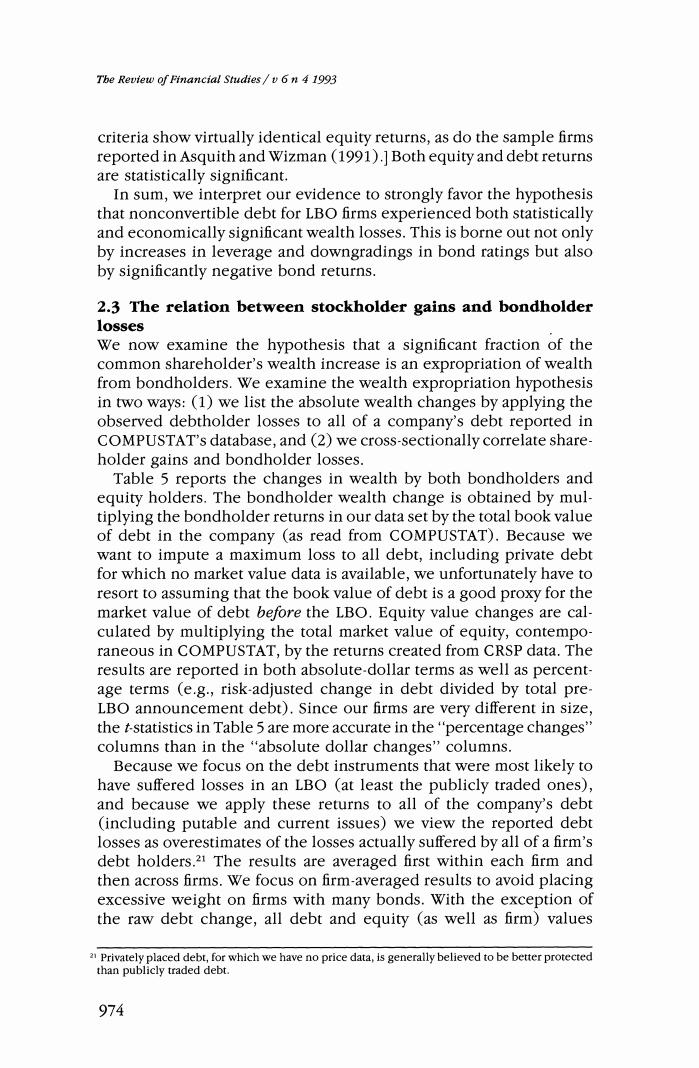正在加载图片...

Tbe Review of Financial Studies/v 6n 4 1993 criteria show virtually identical equity returns,as do the sample firms reported in Asquith and Wizman(1991).Both equity and debt returns are statistically significant. In sum,we interpret our evidence to strongly favor the hypothesis that nonconvertible debt for LBO firms experienced both statistically and economically significant wealth losses.This is borne out not only by increases in leverage and downgradings in bond ratings but also by significantly negative bond returns. 2.3 The relation between stockholder gains and bondholder losses We now examine the hypothesis that a significant fraction of the common shareholder's wealth increase is an expropriation of wealth from bondholders.We examine the wealth expropriation hypothesis in two ways:(1)we list the absolute wealth changes by applying the observed debtholder losses to all of a company's debt reported in COMPUSTAT's database,and (2)we cross-sectionally correlate share- holder gains and bondholder losses. Table 5 reports the changes in wealth by both bondholders and equity holders.The bondholder wealth change is obtained by mul- tiplying the bondholder returns in our data set by the total book value of debt in the company (as read from COMPUSTAT).Because we want to impute a maximum loss to all debt,including private debt for which no market value data is available,we unfortunately have to resort to assuming that the book value of debt is a good proxy for the market value of debt before the LBO.Equity value changes are cal- culated by multiplying the total market value of equity,contempo- raneous in COMPUSTAT,by the returns created from CRSP data.The results are reported in both absolute-dollar terms as well as percent- age terms (e.g.,risk-adjusted change in debt divided by total pre- LBO announcement debt).Since our firms are very different in size, the t-statistics in Table 5 are more accurate in the"percentage changes" columns than in the "absolute dollar changes"columns. Because we focus on the debt instruments that were most likely to have suffered losses in an LBO (at least the publicly traded ones), and because we apply these returns to all of the company's debt (including putable and current issues)we view the reported debt losses as overestimates of the losses actually suffered by all of a firm's debt holders.21 The results are averaged first within each firm and then across firms.We focus on firm-averaged results to avoid placing excessive weight on firms with many bonds.With the exception of the raw debt change,all debt and equity (as well as firm)values a Privately placed debt,for which we have no price data,is generally believed to be better protected than publicly traded debt. 974